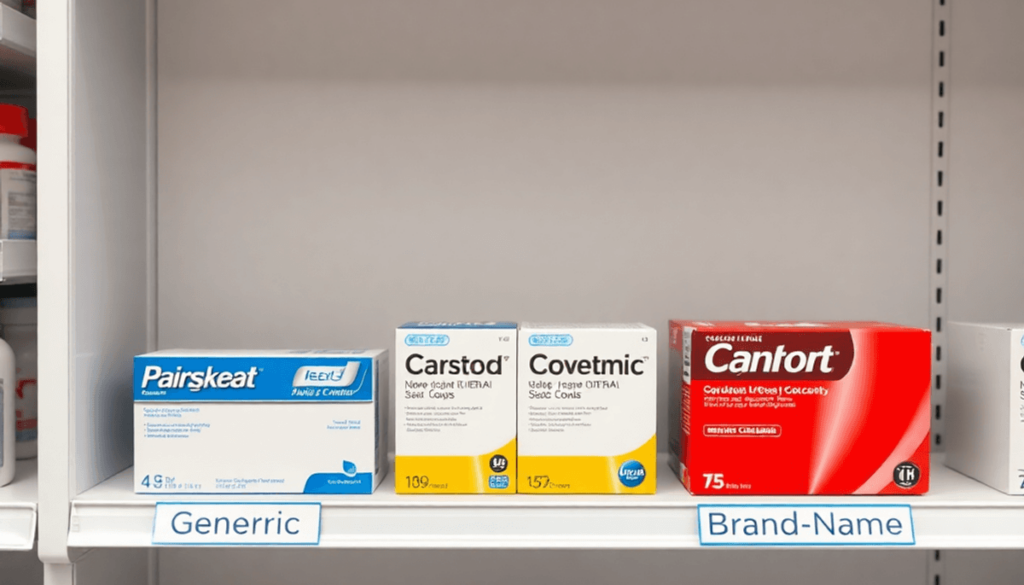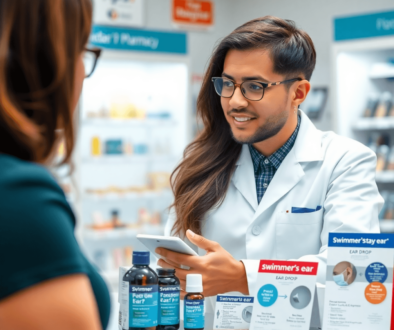Understanding Generic vs. Brand Name Drugs: What Patients Need to Know
When you walk into a pharmacy, you may notice two types of medications on the shelves: generic and brand-name drugs. But what’s the difference between them? Are they essentially the same or completely different?
Understanding Generic Drugs
When it comes to generic drugs, the FDA regulations and Health Canada play a starring role. These medications must pass a rigorous approval process known as the Abbreviated New Drug Application (ANDA). The FDA doesn’t ask generic manufacturers to reinvent the wheel — no need for fresh clinical trials or animal studies — but they do demand proof that the generic is essentially a twin to the brand-name original.
Key FDA and HEALTH CANADA requirements for generics include:
- Same active ingredients as the brand-name drug.
- Identical strength, dosage form, and route of administration.
- Demonstrated bioequivalence — meaning the drug acts in the body with the same speed and extent as its branded counterpart.
Bioequivalence is where science gets interesting. It means a generic drug delivers the active ingredient into your bloodstream at roughly the same rate and amount as the original. This ensures that you get similar therapeutic effects without surprises. The FDA sets tight thresholds for these comparisons, so a generic can’t sneak in with anything less effective or slower acting.
Active ingredients are the magic molecules that do all the heavy lifting inside your body. In generics, these are chemically identical to those in brand-name drugs. That’s why effectiveness stays consistent whether you pick up a $10 generic or a $100 brand name.
The minor differences? Mostly cosmetic or related to inactive ingredients like fillers or dyes, which don’t affect how well the drug works but might influence things like shelf life or patient tolerance.
Patients choosing generics benefit from this careful balance of stringent regulation and cost savings—getting trusted treatment without breaking the bank.
Understanding Brand-Name Drugs
Brand-name drugs have specific characteristics that make them different from generic drugs:
- Proprietary Uses: Brand-name drugs may have specific proprietary uses that differentiate them from generics. These could include unique formulations or delivery mechanisms tailored to certain conditions or patient populations.
- Therapeutic Index Considerations: Medications with a narrow therapeutic index, where the difference between an effective dose and a toxic one is small, may require precise dosing and monitoring. In such cases, healthcare providers might opt for brand-name drugs with known consistency and reliability.
- Inactive Ingredients Impact: Inactive ingredients in brand-name drugs can play a crucial role in their overall quality and efficacy. These components, while not affecting the therapeutic action directly, can influence factors like absorption rates, tolerability, and overall patient experience.
Brand-name drugs are often seen as more reliable in these areas because their manufacturing processes and formulations are more tightly regulated. Healthcare providers may prefer them in situations where these unique factors are critical for patient care and treatment outcomes.
Cost Comparison: Generics vs. Brand Names
Let’s talk money — because understanding the cost differences between generic and brand-name drugs can save you a pretty penny and ease healthcare affordability.
Why do brand-name drugs often come with a heftier price tag?
- Research & Development: Big pharma spends millions, sometimes billions, developing a new drug. Those costs don’t evaporate once the drug hits the market; they’re baked into the price.
- Marketing & Advertising: Ever seen those flashy commercials promising miracle cures? That’s expensive air time paid for by brand-name manufacturers to build trust and recognition.
- Manufacturing Complexity: Brand-name drugs might use proprietary processes or specialized facilities that add to production expenses.
Generics skip most of these costly steps. They don’t have to reinvent the wheel because the original clinical trials and safety data are already available. Instead, they focus on replicating the active ingredient with the same dosage form and strength, which drastically cuts manufacturing costs.
Market competition is another game-changer:
- Multiple generic manufacturers entering the market drive prices down dramatically. When five or six companies produce a generic version of a drug, prices can drop 80-85% compared to the brand name.
- Brand-name companies sometimes respond by lowering their prices or offering discounts, keeping everyone on their toes.
The impact on healthcare costs is no joke:
“Generic drugs save the U.S. healthcare system billions annually by providing affordable access to essential medications without compromising quality.”
For patients, this means more accessible treatment options without sacrificing effectiveness—solid proof that being savvy about generics isn’t just good sense; it’s smart economics too.
Moreover, the economic implications of choosing generics over brand names extend beyond individual savings.
Patient Preferences and Considerations
Patients often have strong opinions when it comes to their medications. Despite generics being cheaper and just as effective, some still lean toward brand-name drugs. Here’s why:
1. Perceived Quality and Reliability
Brand names come with a reputation built on years of marketing and patient experience. The familiar packaging, the trusted label—these can boost confidence. When you’re juggling health issues, that peace of mind counts for something.
2. Medication Adherence Matters
If a patient feels more comfortable or trusts their medication, they’re more likely to take it consistently. Skipping doses because of doubts about a generic’s effectiveness can lead to treatment failure.
3. Concern Over Inactive Ingredients
Generics might differ in color, shape, or fillers. For some with allergies or sensitivities, these small differences aren’t trivial. Even if the active ingredient is identical, the body’s reaction can vary.
Switching between brands or formulations isn’t always smooth sailing:
1. Variations in Therapeutic Effectiveness
Minor changes in inactive components or manufacturing processes can cause subtle shifts in how the drug works. This is crucial for medications with a narrow therapeutic index—where the dose window between effective and toxic is razor-thin.
2. Risk of Adverse Effects
A patient who switches without realizing it might experience new side effects or changes in symptom control. Sometimes it’s psychological; other times, it’s the body responding differently.
Doctors and pharmacists keep an eye on these factors to protect patients from unintended consequences during medication changes. Keeping open communication about preferences and experiences can prevent surprises while ensuring treatment stays on track.
Regulatory Oversight and Quality Assurance in Drug Manufacturing
When it comes to medications, whether generic or brand-name, manufacturing standards aren’t just a suggestion—they’re the backbone of safety and effectiveness. Regulatory agencies like Health Canada and the FDA don’t just give a stamp of approval once and call it a day. Their job spans the entire drug lifecycle: from initial development through clinical trials, manufacturing, and all the way to post-market surveillance. This means your pills are under constant watch.
Why does this matter? Because consistent production quality is crucial. Imagine if every batch of medication you took was a bit different—same active ingredient but slight variations in strength or purity. That’s a recipe for unpredictable outcomes, which no one wants.
How Regulators Ensure Consistent Production Quality
Regulators enforce strict measures to keep manufacturers on their toes:
- Regular inspections: Manufacturing facilities undergo frequent audits to verify adherence to Good Manufacturing Practices (GMP). These inspections check everything from cleanliness to equipment maintenance.
- Batch testing: Samples from each production batch are tested to confirm they meet required specifications for potency, purity, and stability before hitting pharmacy shelves.
- Documentation requirements: Every step in the manufacturing process must be meticulously recorded. This traceability ensures that if issues arise, they can be quickly identified and addressed.
Generic drugs must demonstrate bioequivalence with the original brand but also prove that every batch delivers consistent quality. Brand-name drugs face similar scrutiny, often with more complex formulations or tighter controls due to proprietary ingredients.
Both types of medications benefit from this rigorous oversight, giving patients confidence that what they take is safe, effective, and manufactured under high-quality standards—no matter which pill bottle they reach for next.
There are some instances that as a pharmacist at MisterPharmacist that I would recommend sticking with the same manufacturer and avoid switching around from one brand to a generic brand. If you would like more information, make sure to comment on this blog and will give you my “personal list” of medicines
Understanding the differences between generic and brand-name drugs empowers patients to make informed decisions.
Remember, when choosing between a generic or brand-name medication, consulting your healthcare provider is key. Each option can be a safe and effective choice tailored to individual needs. Stay informed, stay healthy.



